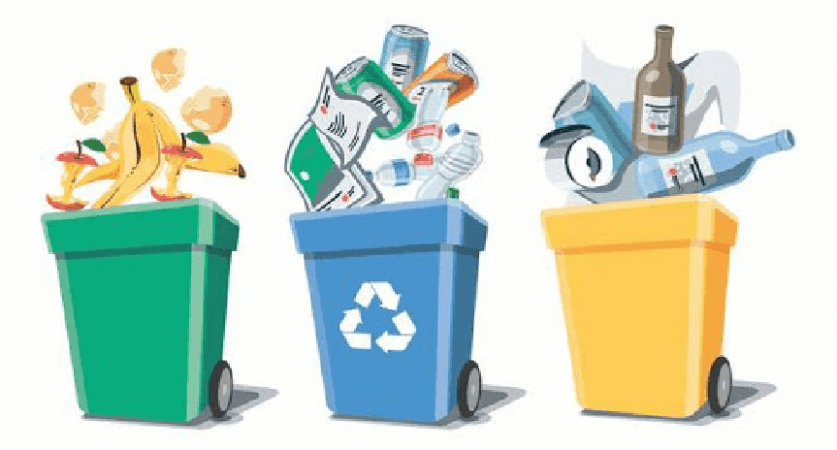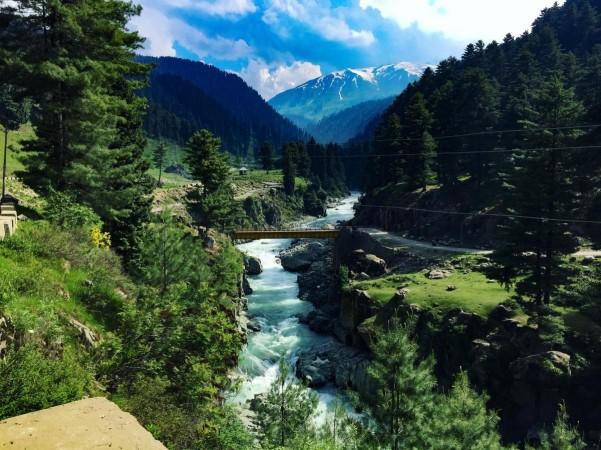On one hand, India is home to Mawlynnong in Meghalaya, which holds the title of being the cleanest village in India or popularly known as "God's own garden", while on the other there are villages that stand entirely opposite in terms of cleanliness. While it is a common notion that villages are gifted at waste management, there's a field study that suggests otherwise. Of all states, who would have thought J&K would be home to thousands of villages where tonnes of waste are poorly managed - or rather mismanaged.
A field study done by Kashmir's Yumberzal Applied Research Institute (KYARI) should serve as an eye-opener for the J&K administration to take up the cause of effective waste management beyond urban local bodies or municipalities. Going by the data provided in the study, 1.75 lakh tonnes of garbage is produced annually in the 6,900 villages across Jammu and Kashmir.
![J&K could have another Pahalgam; but there's 1.75 lakh tonne garbage problem [read now] J&K could have another Pahalgam; but there's 1.75 lakh tonne garbage problem [read now]](https://data1.ibtimes.co.in/en/full/773506/jk-could-have-another-pahalgam-theres-1-75-lakh-tonne-garbage-problem-read-now.png?h=450&l=50&t=40)
If the figure of 1.75 lakh tonnes seems impossible, consider this. There are about 1 crore people living in J&K villages going by a 2011 census, which had the figure at 90 lakh people then. Now, government figures reveal the daily per capita waste production is about 250 grams and assuming the rural population produces just 50 grams of waste per person per day, the 1.75 lakh tonne figure seems understated given the bare minimum calculation.
To understand there's a waste mismanagement problem, there needs to be a study to document the behaviour of consumption or generation of litter in villages. Unfortunately, there are no clear statistics on the waste from various agricultural practices. In fact, the government document titled 'Policy Regarding Jammu and Kashmir State Integrated Solid Waste Management Strategy 2017 Under Rule 11 (1) Solid Waste Management Rules, 2016' is 21 pages and is limited to urban local bodies and municipalities. The action plan for waste management is in accordance with that document, which barely touches the real issue.
"Both documents spread the government's attention to 17 clusters, all of which are urban. However, one cannot fault these documents because they have been produced by the HUDD that is mandated to plan for towns and cities. These documents owe their legitimacy to the Solid Waste Management Rules, 2016, according to which State and Union Territory governments were required to frame the Action Plans within a year. The 2016 rules framed by New Delhi extend to every community across the country, whether urban or rural. The only exemption is 'industrial areas', to which a different set of rules apply," the study said.
Breaking the stigma about villages
Villages may not be a match for cities when it comes to waste production, they still do, and a lot. In this century, it's naive to assume villages do not consume packaged or processed foods.
"Besides the waste that villages generate themselves, rural habitations along routes to economic zones are, uninvitingly, strewn with refuse. Inert refuse like glass bottles, electric bulbs, and tubes; and plastic waste such as poly-packs, bottles, containers, and other discards from day-to-day usage like broken toys. There is also construction waste with rising purchasing 4 powers, and with it a rise in aspirations for a better quality of life. Waste, one might say, is a corollary to the theorem of development with time," the authors of the study noted.

Going by the rough estimates, the villages in J&K produce at least 500 tonnes of refuse daily. But it could very well be more and the lack of statistics in this regard makes it hard to put it into numbers.
In some parts, popular village destinations must put up with waste which comes from outside the community. The villagers end up living with waste thrown by tourists, which wasn't generated by the locals. Hence the resentment to clear it.
Lesson from Aharbal
KYARI did a field study in a hidden gem in Kulgam called Aharbal, a village about 75 kms from Srinagar. One taking the road from Kulgam to Aharbal will be witness to heaps of polybags and single-use plastics, like water bottles and single-use Polystyrene, plates and cups. In fact, the banks of river Vishav are favourite garbage dumping spots for plastics and other forms of waste.
"In short, over years of tourist visits, a place prided by its residents as a small piece of 'Jannat-e-Benazir' has been turned into a dustbin," the study remarked.
With an effective waste management action plan, Aharbal has the potential to give a much-needed boost to tourism in the valley. It will be another hot tourist spot, which will also improve trade, business and quality of life of the people living in the village.
While Pahalgam and Gulmarg are some popular destinations, Aharbal is popular among locals who pick the spot for picnics. The pristine Aharbal waterfall is a sight to behold, but the lack of proper maintenance has sucked away the beauty that it truly holds. There's litter everywhere, especially along the trekking routes, which the villagers insist is left by visitors, the study noted.

The Aharbal Development Authority (ADA) is responsible for the development of the destination and it is modelled along the lines of similar development authorities in Pahalgam and Gulmarg. Pahalgam, for example, has a scientifically assessed system in place to disintegrate the plastic waste and handle the wet organic waste whereas Aharbal lacks one entirely.
"There is scope for more. While a pre-requisite for attracting tourists to Aharbal will always centre around marketing the place as a tourists' spot, the lack of upkeep and, particularly, the unclean face of the tourist destination, is a deterrent. The lack of a tourism economy is also visible as there are hardly any tuck-shops outside the fenced premises with the huts and other similar lodging facilities," the report said.
Another major advantage is that Aharbal is not plagued by terrorist activities and has lived in peace for many years. Taking Pahalgam's waste management as a model, ADA can put Aharbal on the map of J&K's tourist destinations and give a significant boost to tourism in the valley in the coming years. In fact, a business can be modelled around handling waste, which will encourage locals, and administrations; and expedite the process.
KYARI is led by Arhan Bagati, India's First & World's Youngest Deputy Chef de Mission of the Indian Paralympic Contingent for the Tokyo 2020 Paralympic Games. He is also the Ambassador of the Paralympic Committee of India (PCI). Arhan is a Kashmiri himself and is passionate about all things Kashmir.

















